 |
For those who do not know me: I am an artist-physicist, a creator of huge murals, stained glass and other large artworks.
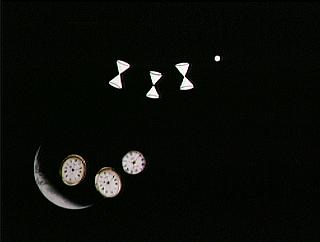 |
The Shroud of Turin is a negative image. Since 1988 global Shroud research fixed its total attention on the C14 dating results. The one Branch of physics, which was painfully neglected through the ages, is the problematic physics of Time and its function. We do not know how long the first 3 minutes lasted after the Big Bang compared to our 3 minutes now.
 |
No one understands how the universe can be younger -- according to newest finds -- than some of the oldest stars we see.
 |
The quantum theory suggested discreet intervals of time but it is not followed up by its mathematics of continuous space and time. Unsolved Time physics makes any dating, including the C14 results essentially suspect, period.
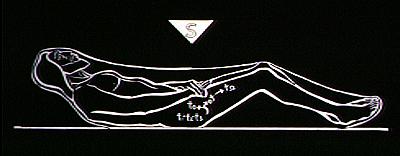 |
Rather, let our attention turn once again on the negative quality of the Shroud image, never explained, where the answer to the image making mechanism lies.
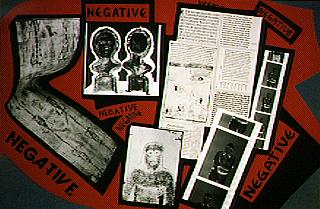 |
It is generally believed that the negative image was not known before modern times. This is not true. But what mankind thought of the negative was very different from ours and vastly different from age to age. The negative concept influenced what people thought created the image on the Shroud and the famous heresies of the wrong image making mechanisms.
THE SWEAT CREATED IMAGE DIVINELY CAUSED
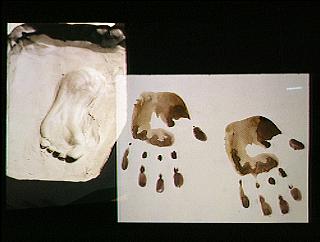 |
True, very few negative forms exist in nature; depressions of footprints or temporary prints of objects due to water, sweat, blood. That is why it was thought in early times, that the Shroud image is a depression of the God-man's body made by sweat, miraculously made permanent. To our present knowledge, no copies of the Shroud survived from before 1516.
THE INFLUENCE OF THE NEGATIVE MOLD AND CAST
 |
The Greco-Roman statues were still familiar to the artists of the 6th - 7th centuries, some cast into bronze, terracotta, silver.
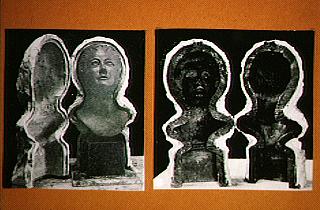 |
Artists had to learn about another idea of the negative, - the mold and the cast. The mold taught him how to translate the negative form through the cast into the positive form of his own creation. Does this mean he could also create the opposite, an absolutely free hand, negative portraitlike design? Not at all. The photo negative did not exist yet for hundreds of years.
 |
We cannot project our own present concept of negativity into another age. But because the familiarity with the cast he could translate with fair success the negative form into a positive one, as shown by the breathtakingly accurate Pantocrator image at St. Catherine Monastery, Sinai.
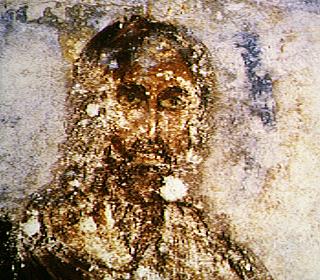 |
That this truly is a positive image made after the Shroud, can be proven, if we compare it with another image in the catacomb of St. Marcellinus and Peter. This much older painting from mid fourth century was based on earlier tradition of eyewitness. It remained in the secret isolation of the catacomb with no possible connection to the Pantocrator of Sinai. Yet, they are almost identical, except a few peculiarities of the Pantocrator image not seen on the catacomb painting: the swelling of the cheek and the nose, the peculiarly uplifted eyebrow and the different focus of the two eyes.
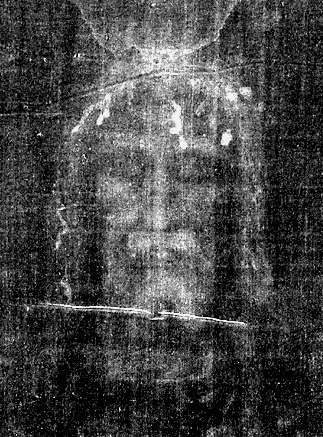 |
Both images resemble the Shroud, but only the Pantocrator matches the signs of torture.
THE INFLUENCE OF BLOCKPRINTING: THE CONTACT IMAGE PRINTED BY SWEAT AND BLOOD
From the 15th century would emerge a completely new idea in the course of civilization, the mass distribution of images and ideas through the agency of the negative, blockprinting.
 |
The process of obtaining a series of copies by means of a stamp, or matrix actually is very ancient and can be traced back to neolithic people of Europe, Egypt, India and China.
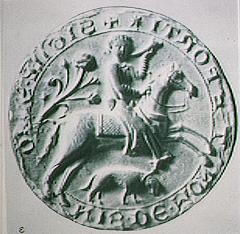 |
But it was used merely for authentication. In the 15th century the volume production of paper was introduced, made from linen instead of cotton.
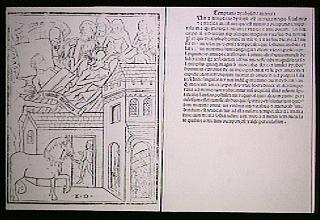 |
Suddenly, the printing of didactic books for mass use is launched, printed page by page from single wood blocks.
 |
Wood blocks and later metal plates were also used to print illustrations of great art,
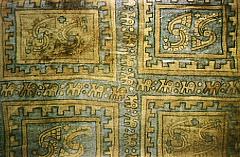 |
and also to print cloth by hand.
 |
All these blocks would print in reverse under pressure. The ultimate limitation of this is that the part of the block printed is left intact, while the rest is cut away. Therefore, the portions of the block, which do the printing, are all the same height, the only way to keep the print undistorted.
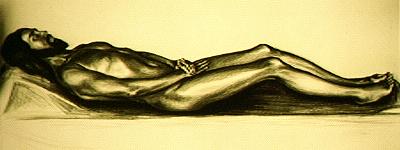 |
This very simply explains why the Shroud image, if a body in relief was wrapped in the Shroud, could not be a contact image.
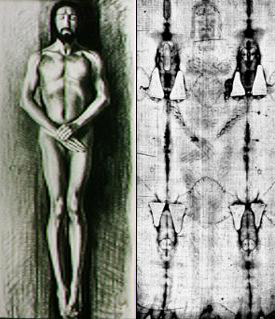 |
The undistorted anatomy of the image testifies to this.
THE IMAGE CONCEIVED AS A PRINT
Copies of the Shroud through the courtesy of Don Luigi Fossati
 |
Suddenly the number of Shroud copies are multiplied in the 16th and 17th centuries.
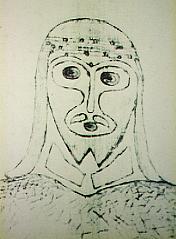 |
They all clearly show the influence of printing.
 |
One cannot say these artists did not know the Shroud was a negative image,
 |
But they were familiar with a different type of negativity. Printmaking in volume was a powerful revolution. They could not see beyond it, as we today cannot see beyond the photographic negative.
We cannot look for our more developed concepts of negativity in other ages long gone. These copies proved what we said before. Whenever mankind discovers a new form of negativity, a new and erroneous image-making mechanism will emerge out of it.
 |
Blockprinting had to depend on very graphic styles in art.
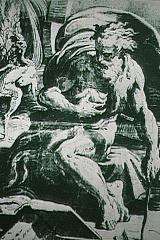 |
After wood engraving and engraving was developed for the more precise reproductions of paintings, negativity assumes a more sophisticated and subtle form. The sweat and aloes-printed contact image slowly is replaced by the idea that the Shroud was a painting. In Belgium the Shroud was on exhibition in 1449 and it already was called "an astonishing art".
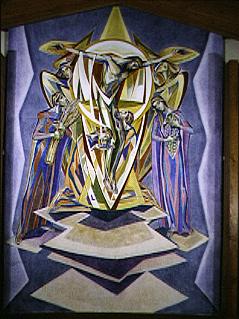 |
However, there is no continuous paint medium film on the Shroud, while there is a continuous, uninterrupted image. This goes against every law of nature and the basic technology of art.
There also is foreshortening on the body of the Man of the Shroud, not known before the high renaissance.
 |
Also, a painting cannot reflect something more than what the artist knew and wanted to convey.
The closer we go to a painting
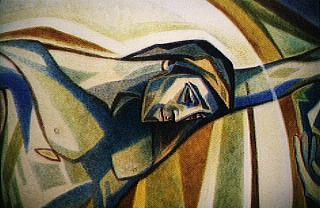 |
the less we can learn about it. The Shroud, on the other hand, can be endlessly studied and new, specific and startling information will emerge, not known by anyone before.
PHOTONEGATIVITY: THE SHROUD, A PHOTOGRAPH?
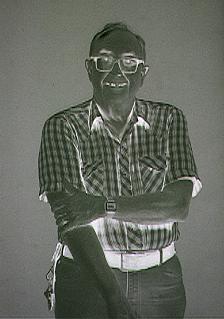 |
In this age we can only think in terms of photonegativity.
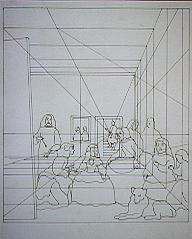 |
The principle of photography, one might say, follows the same rules of geometrical optics as vision itself, dependent on light propagating itself in straight lines, vanishing point, perspective and foreshortening.
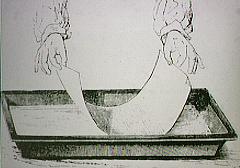 |
But the mechanics of photography is different. It is the action of light on chemically prepared material.
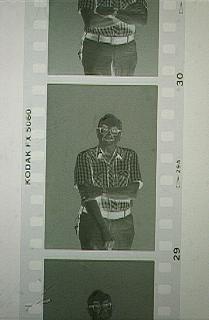 |
The particles cluster where light was strongest on the film, producing a continuous tone image of the light and shadow in reverse.
Blockprinting, wood engraving, and engraving as well as photography, through exactly repeatable pictorial statements, serve mass information.
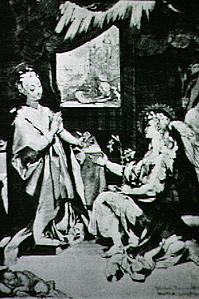 |
But the accuracy of woodblock printing, and engraving depended on draftsmanship and style and therefore they distributed rather intellectual information than a precise record of what truly existed. There always remained a gap in credibility which limited a scientific investigation based on it. In that sense photography was a different kind of revolution. It could record the instant and become a more reliable testimony of how things were once. But it sums up only an isolated instant without placing it in context with anything else, and it makes its record of an instant within the framework of its own technology. As a result, importantly, anything that the technology is not yet able to see has to go unrecorded and even unnoticed. This sets the limit on photonegativity and what it can and will communicate.
 |
Although, today, we cannot see negativity without conceiving it in terms of photonegativity, we should not believe that this is the end of the line, as the mold and blockprinting were not the end of the line either. There are types of negativity which we cannot even fathom today, but which will overwhelm the minds of tomorrow. Did photonegativity solve the problem of why the Shroud is a negative image? No. There are very basic differences between the Shroud image and a photo negative.
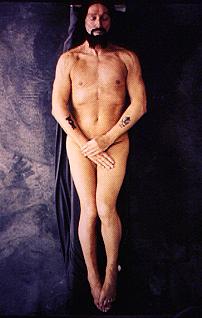 |
The one which in particular devastates the photo idea is that every photograph is a light-created image
 |
with a definite light focus (directionality of light).
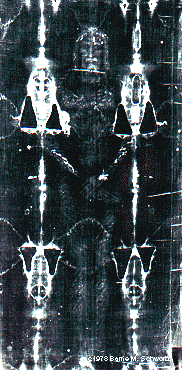 |
the Shroud is not a lightcreated image and it has no light focus.
One of the other great differences is that the Shroud is just plain, raw linen. There is absolutely no evidence on it of a material chemically sensitized to light. Its system of negativity is alien to the system of a photo negative. What made the positive portrait of the Shroud man possible, marginally resembling a photo process?
DENSITY
The densities of the colored fibres due to an unexplained dehydration process cause a somewhat comparable mechanism on the Shroud which, when photographed, translates into a positive effect. In each suggestion about an image making mechanism through the ages a different understanding of the negative is hidden. Are we closer to the truth today?
A hundred years ago in Paris the ghostly image of a key was captured on a photoplate in the drawer of a scientist, the plate was accidentally hidden under a stone. It was believed that sunlight was captured within the stone which slowly ejected itself and caused the ghostly image of the key on the photoplate. The explanation falls back on traditional beliefs of the physics of the times, but falls short of explaining every facet of the phenomenon experienced. Marie and Pierre Curie did not succumb to this traditional explanation. Due to their more original thinking a new quality of nature was found, radioactivity. (See the article "Is The Shroud of Turin a Painting?" for more on this, including an illustration of the "key image").
We too have a ghostly negative image at hand, first hidden in a tomb and then a silverchest. We too try to explain it through what physics and chemistry knows today. However, neither of them explained entirely our ghostly image.
I think the greatest proof of authenticity is that so many of us, after centuries of study, still cannot find the final answer.
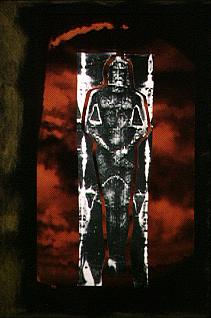 |
Someone is challenging us, challenging us through the evolving mysteries of this piece of cloth,
 |
the precise blueprint of the yet inaccessible future,
 |
always in the dim light of our vision, but never in our grasp.